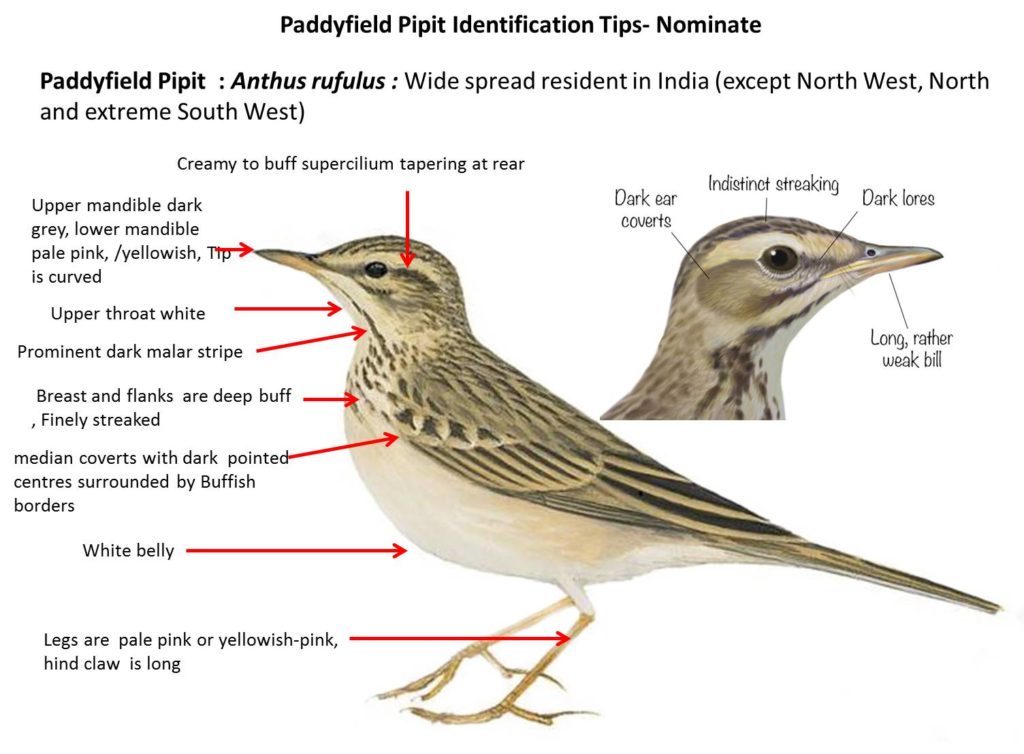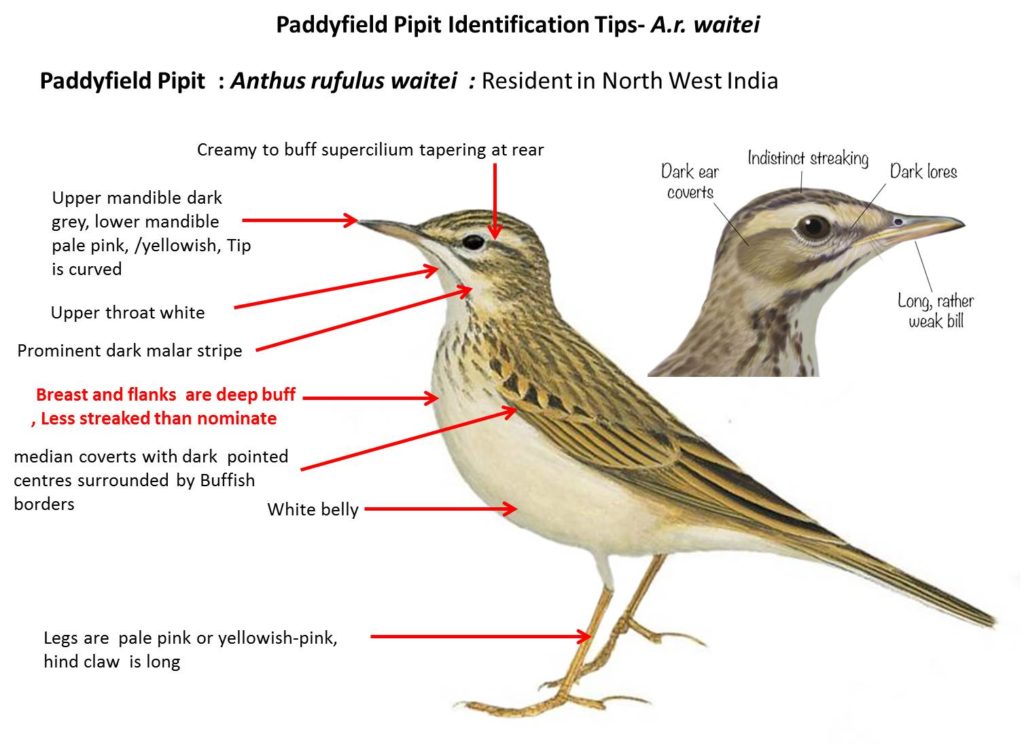Paddyfield Pipit


Paddyfield Pipit Anthus rufulus
Etymology:
- Anthus : Based on Greek mythology.Anthus, son ofAntinous and Hippodamia, was killed by his father’s horses andmetamorphosed into a bird which imitated theneighing of horses but fled at their sight
- Rufulus : Latin for Reddish
Vernacular Name: Hindi: Rugail, Charchari, Sans: Dhan-tulika, Pun: Charchari, M.P.: Suriam, Serwi, Chanchir, Guj: Deshidhanchidi, Mar: Bhartriya pipit, Panthalcharchari, Dhantirchimany, Ta: Pullapuraki, Nettai-kali, Te: Gurapa-modi-pitta, Bharatajittangi, Mal: Chatuppan, Varamban, Kan: Pipileeka, Sinh: Gomaritta, Panu-kurulla
Distribution in India: Widespread resident in India.
Description: Size of 15–16 cm; wt. of 17·4–22·7 g. The nominate race has long creamy to buff supercilium tapering at rear, pale lores, dark submoustachial stripe, prominent dark malar stripe and patch. The above parts are greyish-brown, streaked blackish, less streaked on back and rump. The primaries, secondaries and primary coverts are dark brown with narrow white edges, tertials and secondary wing-coverts are tipped and edged rufous, greater coverts are paler with broad sandy-buff edges and tips, median coverts are with blackish centres and broad buff-white tips forming a wingbar, the lesser coverts are sandy brown; tail is blackish-brown, edges of T1 are tinged rufous, T5 and T6 with outer web and much of distal inner web are white; upper throat is white, lower throat, breast and flanks are deep buff, belly is white, has a band of fine blackish streaks across breast; the underwing-coverts and axillaries are creamy buff; iris is dark brown; upper mandible is dark grey, lower mandible is pale pink, sometimes yellowish; legs are pale pink or yellowish-pink, long hind claw measures 10–14 mm. The sexes are alike. The juvenile has unmarked pale lores, pale tawny feather edges on upperparts giving scaly effect, has two indistinct pale wingbars, it is more sharply streaked below; the pale edgings are lost by first winter.
Habitat: It is found in open country, short grassland, paddy fields, stubble fields and cultivations, airfields, roadsides, wetland edges and savanna woodland. It is found up to 2400m
Food habits: It eats adult and larval insects, weevils, ants, termites, bugs, spiders and weed seeds and vegetable matter. It forages on the ground, picking terrestrial invertebrates. It is found singly or in pairs, occasionally in small groups
Breeding habits: They breed in Mar–Jul in North India, Nov–Jun in Rest of India, Jan–Jul in Sri Lanka, Apr–Jun in Sumatra, and in Apr–Jun on Lombok, Sumbawa and Flores. In song flight ascends in series of curves, before diving to the ground. The nest is built by female as male keeps guard, or by both sexes. The nest is a typical cup of grass and roots, lined with finer material, placed on ground among grass tufts, and often in depression like cattle footprint and may be partly domed, and have tunnel entrance. They lay a clutch of 3–4 eggs. The incubation and brood-feeding is done by both sexes.